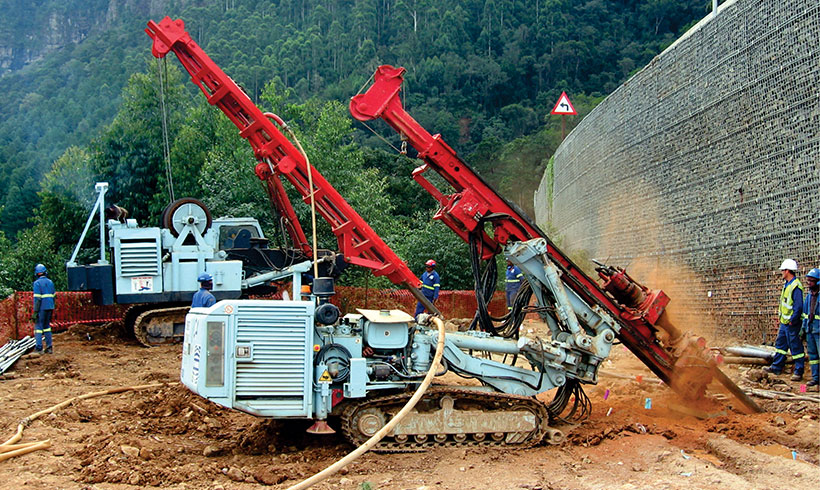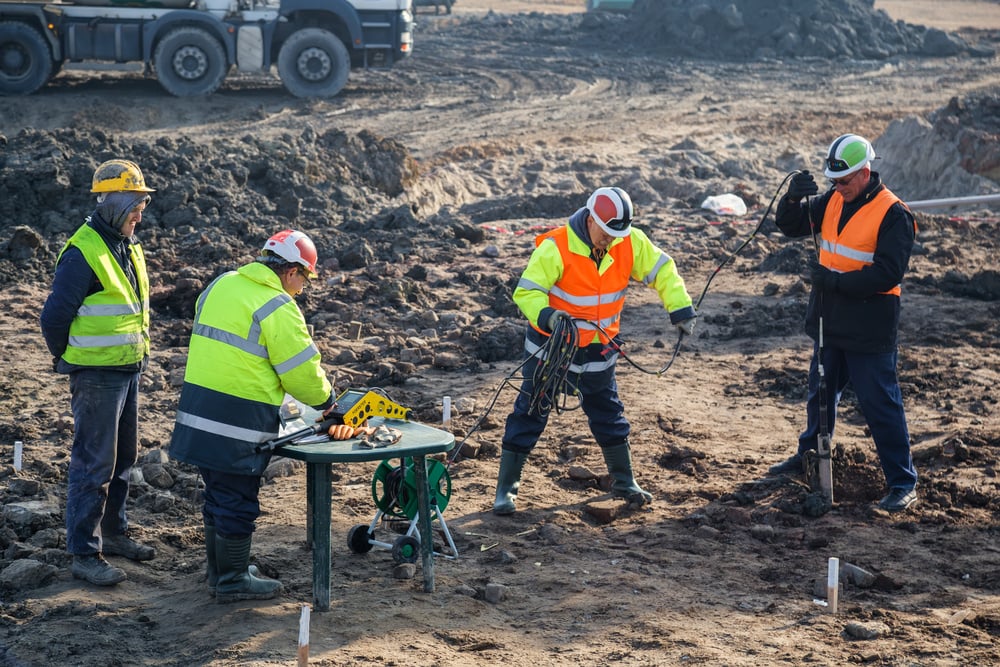The smart Trick of Geotechnical Engineering For Construction Projects That Nobody is Discussing
The smart Trick of Geotechnical Engineering For Construction Projects That Nobody is Discussing
Blog Article
The Ultimate Guide To Geotechnical Engineering For Construction Projects
Table of ContentsGeotechnical Engineering For Construction Projects Fundamentals ExplainedGeotechnical Engineering For Construction Projects - The FactsGetting My Geotechnical Engineering For Construction Projects To WorkGeotechnical Engineering For Construction Projects Things To Know Before You BuyHow Geotechnical Engineering For Construction Projects can Save You Time, Stress, and Money.Some Known Facts About Geotechnical Engineering For Construction Projects.The Greatest Guide To Geotechnical Engineering For Construction ProjectsThe Main Principles Of Geotechnical Engineering For Construction Projects
Accompanying this enhanced complexity comes geological and ecological aspects that influence the layout of the structure, which is perhaps the most fundamental part of any type of growth. People need to rely on that structures, bridges, and streets will certainly stand the test of time. A Geotechnical engineer encourages on how a framework can best be supported giving its one-of-a-kind circumstances What's hidden listed below the surface area of the ground is most likely the most essential piece of details that a Geotechnical Engineer desires.These samples are then assessed by the laboratory to determine soil composition (Geotechnical Engineering for Construction Projects). The failure of sand, silt, clay, and various other products present in the soil, helps the engineer establish what unique qualities the website has and what the implications of those might be. Of course dirt structure is just one examination that can be done on examples
Some Ideas on Geotechnical Engineering For Construction Projects You Need To Know
Based upon these tests, there may be much more dirt borings that are pierced, or the engineer might have sufficient details from the initial tests to make a suggestion to the customer on how best to wage their project. Results are usually reported via borings logs which show the soil composition and features at a variety of midsts.
Geotechnical designers are accountable for comprehending the properties of natural sources and utilizing this understanding to establish safe, cost-effective designs for building and construction jobs. It is an important part of any kind of civil design job, as it is made use of to identify the suitability of a website for building and construction and to guarantee the framework's safety.
This includes executing laboratory examinations on the samples and making use of geophysical techniques such as seismic refraction and electrical resistivity surveys. This data is made use of to examine the site's suitability for construction and to establish the kind of foundation that ought to be made use of. Geotechnical engineering examines soil problems, identifies potential dangers, chooses an appropriate structure system for the suggested framework, and establishes the finest structure style for a given task.
Geotechnical Engineering For Construction Projects for Dummies
The structure might become unstable or collapse without proper dirt stabilisation, leading to costly repair work and possible injury. The stabilization procedure involves making use of numerous methods to enhance the stability of the dirt, such as compaction, grouting, and the enhancement of strengthening products. Without soil stablizing, the risks related to building and construction jobs would be a lot greater, and the outcomes much less reputable.
Geotechnical designers conduct website examinations to analyze the soil's residential properties and determine possible risks. They develop and implement soil stablizing strategies, such as adding cement, lime, or various other supporting agents, to enhance the dirt's strength and security.
Everything about Geotechnical Engineering For Construction Projects
Geotechnical designers are important in helping to ensure that dirt stablizing is done correctly to ensure that the framework is risk-free and secure. Geotechnical engineering is additionally used to assess soil conditions and recognize potential risks. This includes evaluating potential flooding, landslides, and various other natural catastrophes that can impact the foundation.
Geotechnical engineers utilize this knowledge to do site examinations, dirt, and rock testing, and to translate the results to identify the suitable layout parameters for a job. This info is utilized to make certain that the structure, preserving wall surfaces, inclines, and various other structures developed on or within the subsurface materials have sufficient stability and resistance to outside tons, such as earthquakes, wind, and water.
These structures call for a deep understanding of the actions of the subsurface products, as well as the capability to handle the effect of excavation and building on the surrounding environment. Geotechnical designers use their know-how to identify the suitable design parameters for these structures, such as the dimension and shape of the passage, the strength of the check my site supporting rock, and the kind and quantity of assistance called for.
Along with the design and building of frameworks, geotechnical engineering also plays an important role in the recovery and upkeep of existing frameworks. As frameworks age, they might experience destruction or various other problems that influence their stability and efficiency. Geotechnical designers use their knowledge to examine the problem of these frameworks, recognize the reasons for the issues, and create approaches to address them.
Top Guidelines Of Geotechnical Engineering For Construction Projects
In this post, I find will go over the role of geotechnical design and the sorts of issues geotechnical engineers resolve. Geotechnical designers (geotechs) are included in nearly every kind of civil design project. Nevertheless, every structure is supported by soil or rock unless it is drifting, flying, or falling down.
Geotechs are usually most included at the start of a job. Geotechnical Engineering for Construction Projects. Several of the tasks that a geotech might be in charge of are investigating subsurface conditions, figuring out called for laboratory testing of dirt and rock, translating the subsurface expedition outcomes, and creating reports that document the website conditions and give suggestions for foundations, fill specifications, incline stability, and so on
It is not uncommon for geotechnical engineers to concentrate on only one of the locations listed above and research that subject their entire job. Geotechnical engineering is an important element of any type of civil design task. Despite just how excellent a framework is developed, it will not be excellent for long if the foundation is poor.
The 9-Second Trick For Geotechnical Engineering For Construction Projects

Sometimes, points that may not seem vital end up being important years later on when issues arise. One last point to check my source remember: geotechnical design is married to geology. Despite just how great your engineering knowledge is, if something essential is missed in the geologic characterization at a website, your experience may not conserve you.
He appreciates creeping around on any landslide he can locate and spending time fly fishing on the water. I wish you appreciated this week's blog post by visitor writer Jese Vance. I hope you'll join us.
Little Known Facts About Geotechnical Engineering For Construction Projects.

It is important to recognize the dirt condition prior to creating the kind and depth of foundation required for the structure. In order to understand the subsurface dirt condition, a geotechnical examination is called for.
All about Geotechnical Engineering For Construction Projects
Once the test results come, the Geotechnical Engineer analyses the report, which details the soil and rock homes groundwater problem and the connected threats. The type of foundation required to build the structure is then established. Based on the suggestion of the Geotechnical Designer, the structural designer after that develops the framework.
Report this page